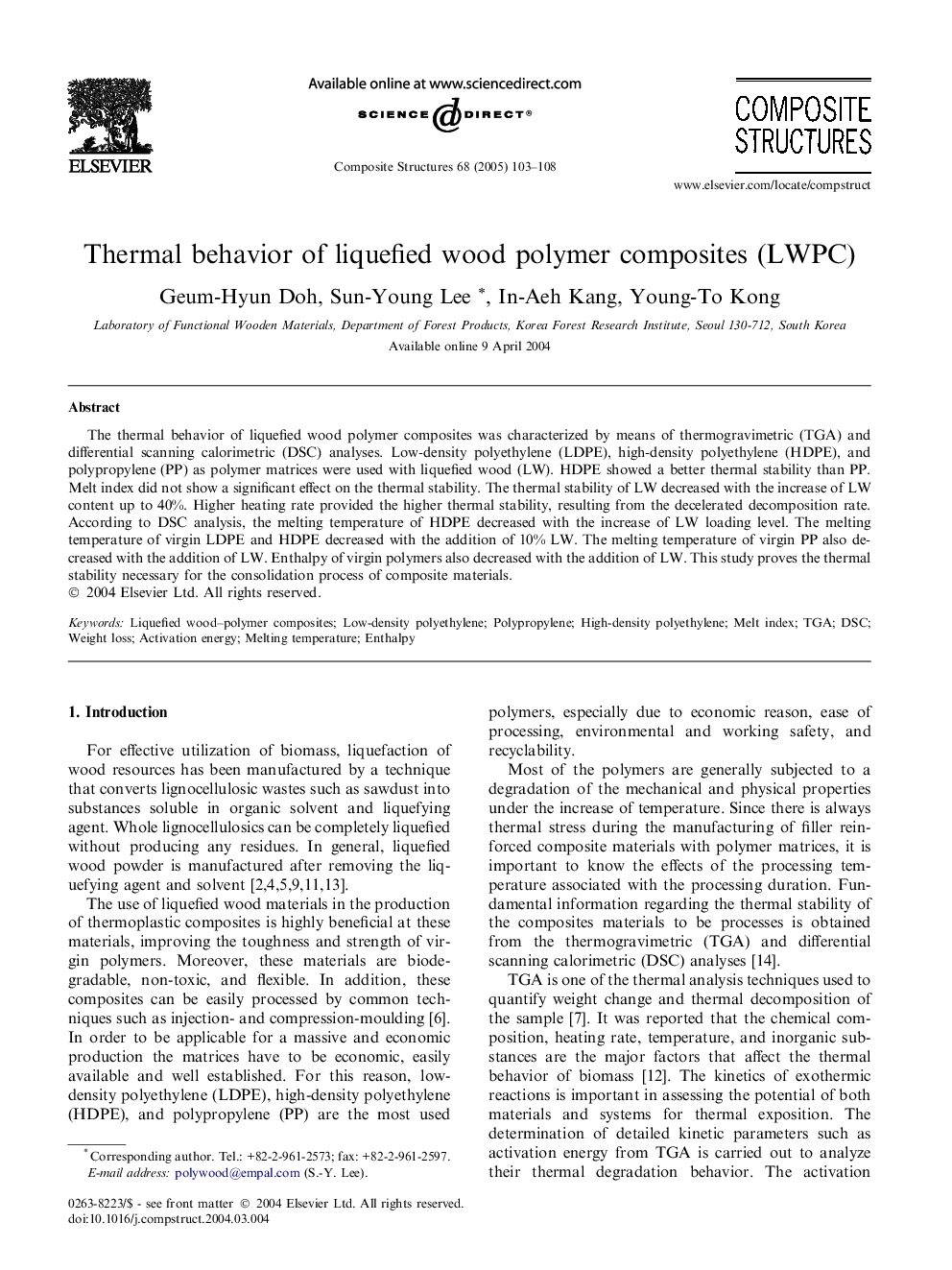| Article ID | Journal | Published Year | Pages | File Type |
|---|---|---|---|---|
| 10284183 | Composite Structures | 2005 | 6 Pages |
Abstract
The thermal behavior of liquefied wood polymer composites was characterized by means of thermogravimetric (TGA) and differential scanning calorimetric (DSC) analyses. Low-density polyethylene (LDPE), high-density polyethylene (HDPE), and polypropylene (PP) as polymer matrices were used with liquefied wood (LW). HDPE showed a better thermal stability than PP. Melt index did not show a significant effect on the thermal stability. The thermal stability of LW decreased with the increase of LW content up to 40%. Higher heating rate provided the higher thermal stability, resulting from the decelerated decomposition rate. According to DSC analysis, the melting temperature of HDPE decreased with the increase of LW loading level. The melting temperature of virgin LDPE and HDPE decreased with the addition of 10% LW. The melting temperature of virgin PP also decreased with the addition of LW. Enthalpy of virgin polymers also decreased with the addition of LW. This study proves the thermal stability necessary for the consolidation process of composite materials.
Keywords
Related Topics
Physical Sciences and Engineering
Engineering
Civil and Structural Engineering
Authors
Geum-Hyun Doh, Sun-Young Lee, In-Aeh Kang, Young-To Kong,
